- Author Matthew Elmers [email protected].
- Public 2023-12-16 21:49.
- Last modified 2025-01-24 09:17.
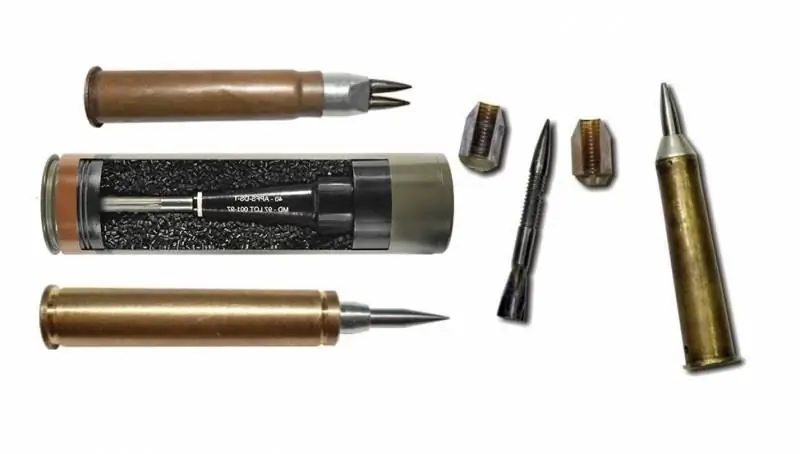
In the article "Forgotten Soviet cartridge 6x49 mm against cartridge 6, 8 mm NGSW" we considered one of the possible ways of responding to the American NGSW program in the event of its successful implementation. Possible ways of evolution of small arms in the Russian Federation in the event of an obvious failure of the NGSW program, we discussed earlier in the article "The evolution of the machine gun in the USSR and in Russia in the context of the American NGSW program".
One of the priority tasks for promising small arms, which is indicated as the reason for the emergence of the NGSW program, is the appearance in the armed forces of Russia and China of existing and promising personal body armor (NIB).
Despite their seeming simplicity, small arms are incredibly effective in killing enemy soldiers, as shown by medical statistics of the largest military conflicts of the 20th century, while the cost of re-equipping the armed forces with even complex and expensive small arms is only a small fraction of the cost of financial costs for other types of weapons. …
As we discussed earlier, there are two main ways to increase the armor penetration of an ammunition: increasing its kinetic energy and optimizing the shape and material of the ammunition / ammunition core (of course, we are not talking about explosive, cumulative or poisoned ammunition). A bullet or a core for it is made of ceramic alloys of high hardness and a sufficiently high density (to increase the mass), they can be made harder and stronger, but it is unlikely to be denser. Increasing the mass of a bullet by increasing its dimensions is also practically impossible in the acceptable dimensions of hand-held small arms. There remains an increase in the speed of the bullet, for example, to hypersonic, but in this case, the developers are faced with enormous difficulties in the form of a lack of necessary propellants, extremely rapid barrel wear and high recoil acting on the shooter.
However, there are several ways to increase the armor penetration of a bullet: the use of sub-caliber bullets and tapered barrels.
Subcaliber bullets
Active research into the possibility of using sub-caliber bullets (feathered sub-caliber bullets, OPP) in small arms has been carried out since the middle of the 20th century. Prior to this, the creation of armor-piercing feathered sub-caliber projectiles (BOPS) was considered a more popular and promising direction, which, in fact, was confirmed by their creation and successful operation to the present.
Work on BOPS in the USSR began in 1946, and since 1960, NII-61 studied the possibility of using BOPS in rapid-fire automatic cannons under the leadership of A. G. Shipunov. In parallel, at this time, work was underway to create a new automatic ammunition of caliber 5, 45 mm, in connection with which A. G. Shipunov was proposed to develop a cartridge with an OPP for small arms.
The draft design was developed in the shortest possible time by D. I. Shiryaev. However, theoretical research has not been experimentally confirmed. The real ballistic coefficient of arrow-shaped bullets turned out to be two times worse than the calculated one, the pressed pallet fell off the bullet, the production of cartridges with OPP required time-consuming turning, milling, metalworking and subsequent manual assembly.
In 1962, tests were carried out for the lethal effect of arrow-shaped bullets, which, as it turned out, was inferior not only to the requirements of the military for promising ammunition, but also to the existing standard cartridges.
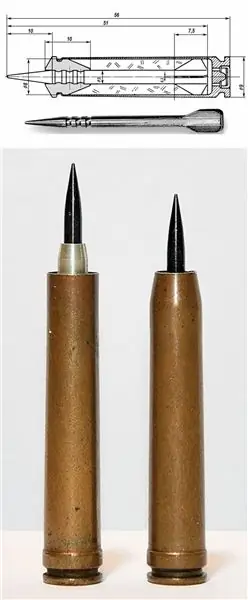
In 1964, work on arrow-shaped bullets was resumed by I. P. Kasyanov and V. A. Since 1965, the young designers Vladislav Dvoryaninov was appointed the responsible executor for the promising cartridge.
In the process of designing a new cartridge, solutions were implemented that increase the destructive effect: a flat in the front of the OPP to provide a tipping moment when it hits dense tissues and a transverse groove along which the boom was bent under the action of the overturning moment.
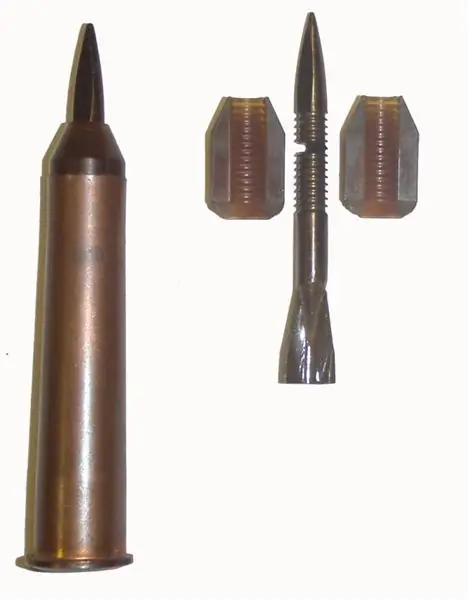
The most difficult task was to increase the accuracy of fire with sub-caliber feathered bullets to the level of accuracy of bullets fired from rifled barrels. It was required to eliminate the influence of the sectors of the pallets on the OPP at the time of their separation after leaving the trunk. In 1981, tests of experimental 10/4, 5-mm cartridges with OPP in the OTK TsNIITOCHMASH showed an accuracy of 88-89 mm with the requirements of no more than 90 mm.
It should be emphasized separately that the labor intensity of manufacturing an experimental cartridge with OPP was only 1.8 times higher than the labor intensity of manufacturing a standard 7.62 mm rifle cartridge, and the resource of smooth-walled machine-gun barrels when firing with this cartridge exceeded 32 thousand shots. For comparison: the barrel resource of the AK-74 caliber 5, 45x39 mm is 10,000 rounds, the PKM machine gun of 7, 62x54R caliber 25,000 rounds
Simultaneously with the development of the main 10/4, 5-mm version, a single-bullet 10/3, 5-mm cartridge with an initial speed of an OPP of 1360 m / s and a three-bullet cartridge of 10/2, 5 mm were developed, which could be used as a single cartridge for an assault rifle and a light machine gun.
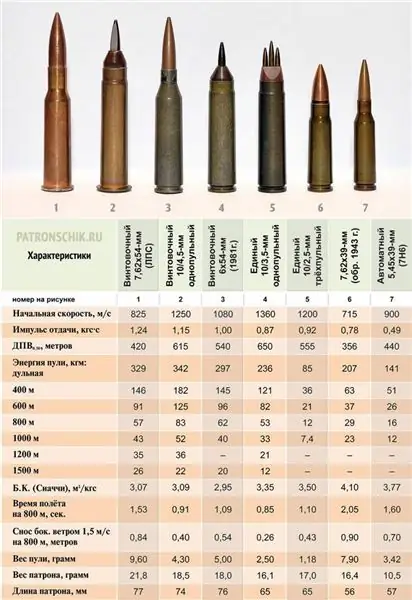
A single-bullet 10/3, 5-mm cartridge could be used at long firing ranges, while using a three-bullet cartridge would provide a higher lethal and stopping effect at short distances. As we said in the article “You can't stop killing. Where to put a comma?”, If we consider the stopping effect as the dependence of the probability of death on the time from the moment the bullet hits the target, then hitting several ammunition at the same time with a high probability will provide a higher probability of destruction of vital organs and, accordingly, the rate of death.
Cartridges with OPP were never accepted into service. Formally, priority was given to the more classic 6x49 mm cartridge for rifled weapons, which we talked about in the article "Forgotten Soviet cartridge 6x49 mm versus 6, 8 mm NGSW cartridge." At that time, the characteristics of the 6x49 mm cartridge fully met the requirements of the military, while its development in production would be an order of magnitude easier than cartridges with OPP. In addition, some tests indicated a potential lack of cartridges with OPP - too strong spread of pallets, which could hit their own soldiers located in front of the shooter. On the other hand, it was suggested that these tests were used as a formal reason to give priority to the 6x49 mm cartridge, since earlier tests did not show significant problems with pallet spread.
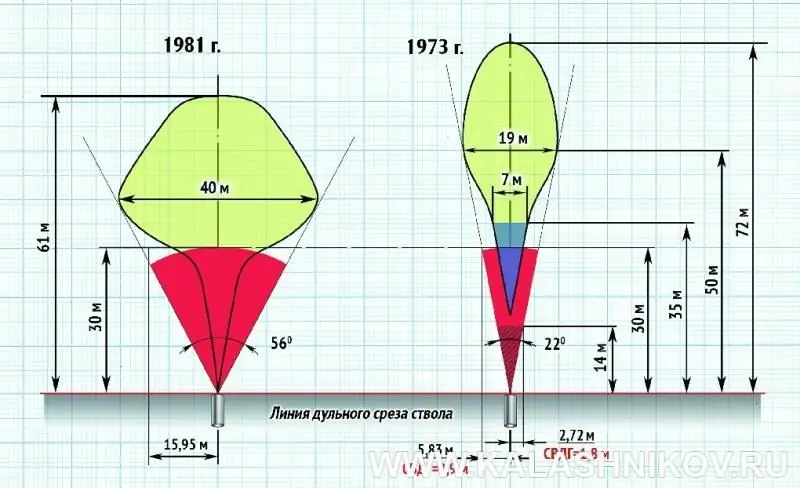
However, the collapse of the USSR drew a line both on the topic for cartridges with OPP, and with the topic for the cartridge 6x49 mm.
For more details on the history of the creation of sub-caliber ammunition for small arms, see the article "Arrow-shaped bullets: a path of false hopes or a history of missed opportunities?" (part 1 and part 2).
Tapered barrel
In the article “Caliber 9 mm and stopping action. Why was 7, 62x25 TT replaced with 9x18 mm PM? " mentioned "Gerlich's bullet" as an example of creating a small-caliber cartridge with extreme damaging parameters.
Initially, the idea of using a tapered barrel belonged to the German professor Karl Puff, who in 1903-1907 developed a rifle for a bullet with a belt for rifled firearms, with a small taper of the barrel. In the 1920s and 1930s, this idea was refined by the German engineer Gerlich, who managed to create a weapon with outstanding performance.
In one of the experimental samples of the Hermann Gerlich system, the bullet diameter was 6, 35 mm, the bullet weight was 6, 35 g, while the initial bullet velocity reached 1740-1760 m / s, the muzzle energy was 9840 J. At a distance of 50 m, the Gerlich bullet broke through into steel armor plate 12 mm thick, a hole 15 mm in diameter, and in thicker armor made a funnel 15 mm deep and 25 mm in diameter. An ordinary 7.92 mm Mauser rifle bullet left only a small depression of 2-3 mm on such armor.
The accuracy of the Gerlich system also significantly surpassed ordinary army rifles: at a distance of 100 meters, 5 bullets weighing 6.6 g fit into a circle with a diameter of 1.7 cm, and when firing at 1000 meters, 5 bullets weighing 11.7 g fell into a circle with a diameter of 26.6 g. cm. Due to the high speed of the bullet, wind, humidity, air temperature practically did not affect it. The flat flight path made aiming easier.
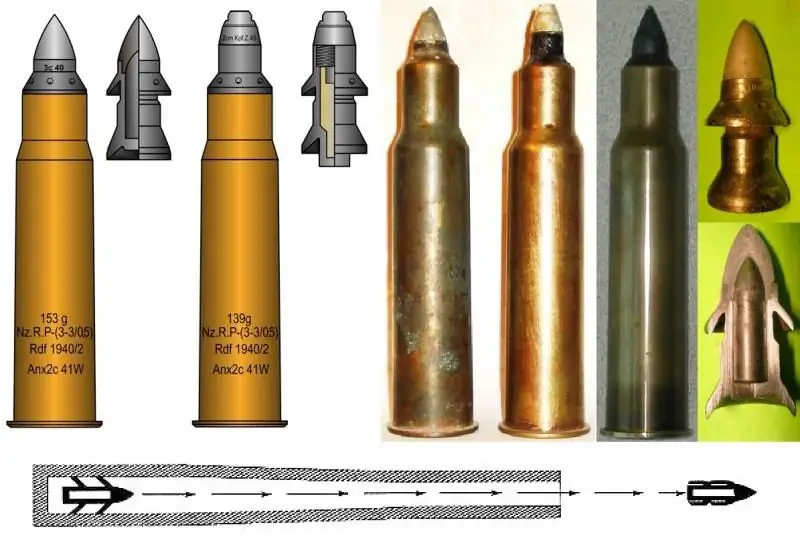
The weapon of the Hermann Gerlich system did not become widespread, primarily due to the low resource of the barrel, amounting to about 400-500 rounds. Another possible reason, most likely, is the complexity and high cost of manufacturing both the bullets themselves and the weapon.
Technologies of a promising automatic rifle (assault rifle)
Why do we need feathered sub-caliber bullets and a tapered barrel in a promising small arms?
Several determining factors are important here:
1. Feathered sub-caliber bullets can be accelerated to significantly higher speeds than rifled bullets, without increasing barrel wear.
2. The weapon of the Gerlich system can significantly increase the speed of the bullet, in fact, to hypersonic speeds, while it can be assumed that the main reason for the wear of the weapon of the Gerlich system was previously the presence of rifling in it.
Based on this, it can be assumed that a feathered sub-caliber bullet and a tapered barrel can be combined in a promising small arms. The role of the obturating rings, programmably deformable in the process of firing, will be played by the pallet of a feathered sub-caliber bullet of a certain configuration. At the same time, barrel survivability can be obtained, which corresponds to or exceeds the indicators of existing modern small arms
Most likely, the most optimal format for a promising cartridge will be a telescopic ammunition, in which the projectile is completely drowned in a powder charge. In fact, there are two charges in it. The expelling charge is triggered first, pushing the bullet / projectile from the sleeve into the barrel and filling the vacated space with the products of the expelling charge combustion, after which the main high-density charge is ignited.
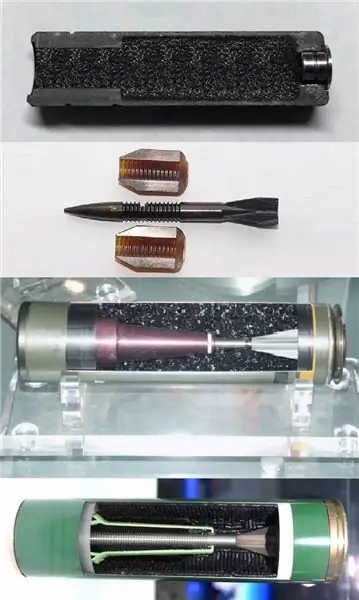
A telescopic cartridge with a fully recessed bullet will give developers a wide field for experiments, provide opportunities for creating small arms automation, different from those implemented for weapons with classic ammunition.

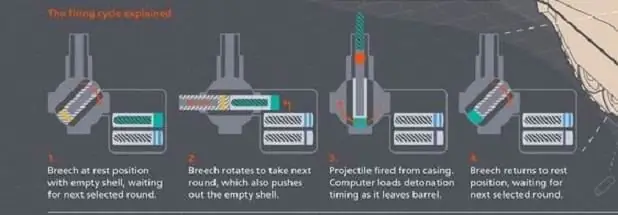
]
To optimize the density of placement of ammunition in the weapons store, promising cartridges can be made not only round, but also square or triangular in cross section.
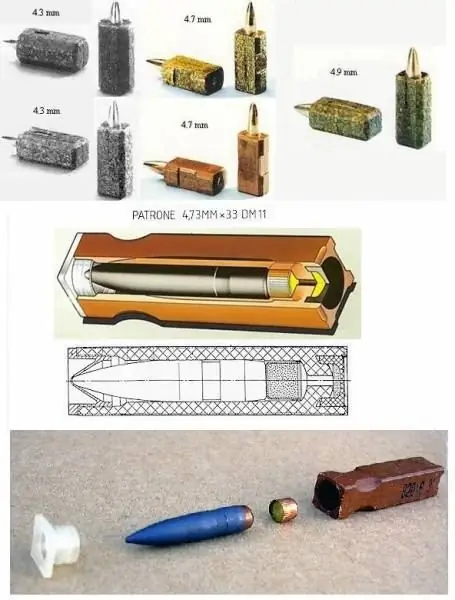
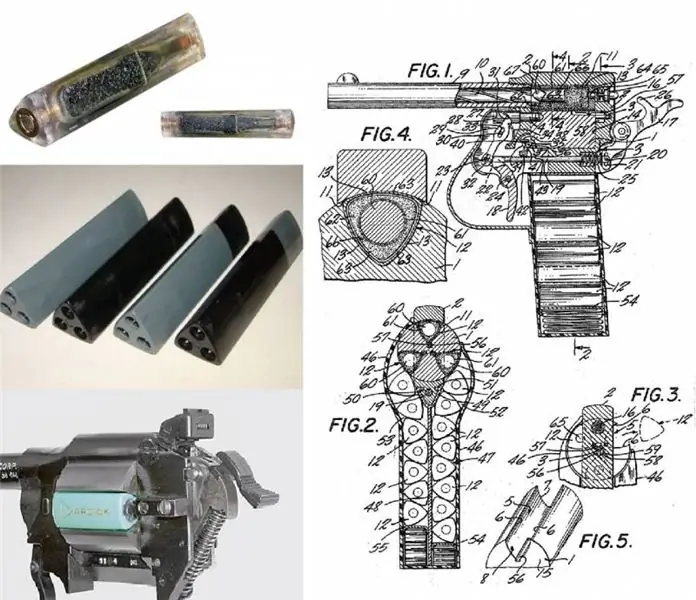
The case of the sleeve, most likely, will be made of polymer, this will reduce the mass of the cartridge, keeping it at the level of low-impulse cartridges of 5, 45x39 mm, therefore, prevent a decrease in the ammunition load of the fighters.
The proliferation and improvement of computers, as well as specialized software, can lead to the appearance of sub-caliber ammunition, significantly different in layout from those that were developed during the Soviet period.
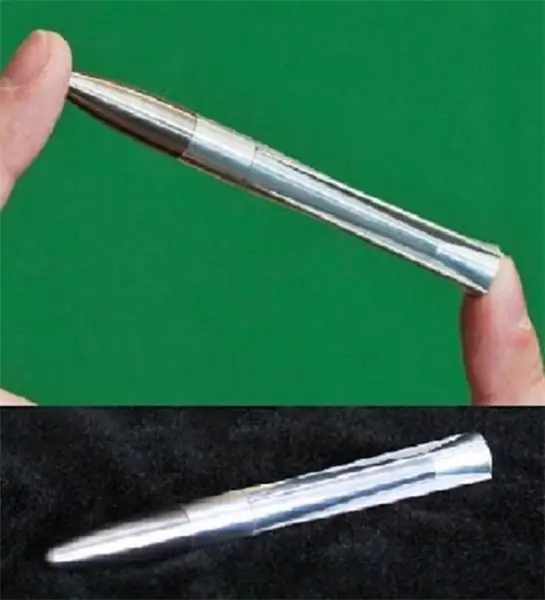
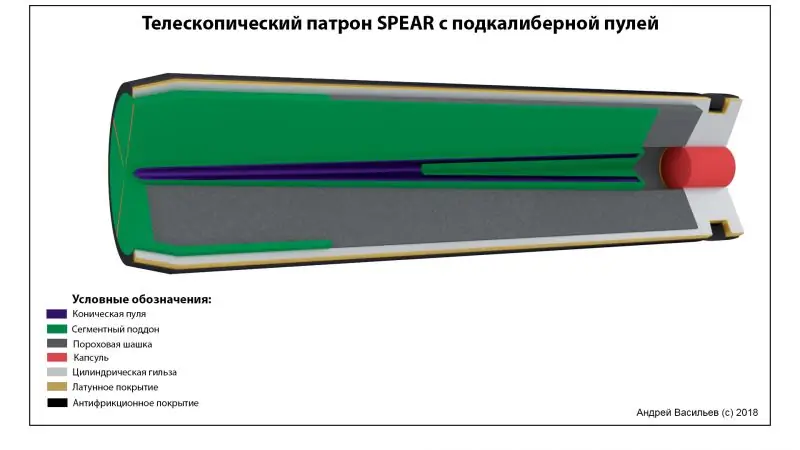
By varying the mass of the OPP in the range of 2, 5-4, 5 grams and the speed of the OPP in the range of 1250-1750 m / s, you can get an initial energy in the region of 3000-7000 J. For three-bullet cartridges, the initial energy will accordingly be 1500-2000 J per one striking element, with the mass of one element 1.5 grams. Based on the above table, compared to the energy and recoil force of various ammunition, recoil can be expected in the range from cartridge 7, 62x39 mm to cartridge 7, 62x54R. At the same time, a line of ammunition with various types of equipment designed for combat in various tactical situations can be produced.
For example, if the battle is fought in an open area, with the predominant defeat of targets at a long distance, then single-bullet cartridges with an energy of about 6000-7000 J are used, which are more effective when firing single fire. If there is a battle in urban areas, where it is required to break through a large number of obstacles (duval, relatively thin walls of buildings, thickets of vegetation), then single-bullet cartridges with an energy of 3000-4500 J are used, which are more effective when firing in bursts. If penetration of obstacles is not required, but it is necessary to ensure the maximum density of fire at close range, then three-bullet ammunition is used.
This will allow you to gain an advantage over weapons developed under the NGSW program in the entire range of weapon use ranges, in various tactical situations.
RPM speeds up to 1360 m / s were obtained at the stage of developing this topic by Vladislav Dvoryaninov, during the Soviet era. This means that the combination of new propellants and a tapered barrel can make it possible to achieve OOP speeds of the order of 2000 m / s. With such an initial velocity of the OPP, between shots and hitting the target at a distance of 500 meters, approximately 0.3 seconds will pass, which will significantly simplify shooting and reduce the impact of external factors on the OPP
Manufacturing the core of the OPP from an alloy based on tungsten carbide in combination with the high speed and small diameter of the OPP will ensure the penetration of all existing and prospective NIBs.
To reduce friction and reduce barrel wear, the OPP tray can be made of modern polymeric materials, for example, those used for the manufacture of the leading belt in the new Russian shells for 30-mm automatic cannons.
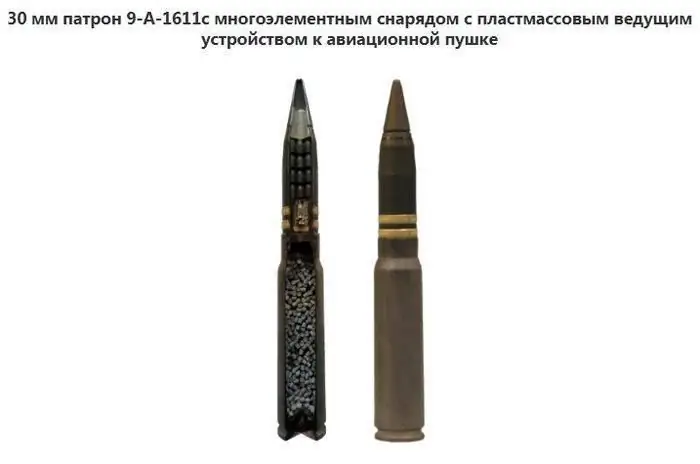
Despite the absence of grooves and the use of OPP pallets made of polymer materials, the high speed of the bullet and the pressure in the barrel, in combination with the taper of the barrel, may require the implementation of measures to increase the strength of the barrel of a promising automatic rifle. And here a smooth barrel is a significant advantage that simplifies the technological operations for its manufacture. For example, a combination of a steel or even titanium (hereinafter titanium alloys) barrel with a tungsten carbide-based alloy insert can be implemented.
The barrel blank can be pre-formed by 3D printing, followed by machining on high-precision machines.
Scientists from the Rhine-Westphalian Technical University of Aachen and the Fraunhofer Institute for Laser Technology (Germany) have begun research on laser powder 3D printing with tungsten carbide and cobalt carbide hard alloys. For this, a modernized version of a laser 3D printer is used, supplemented by emitters in the near infrared spectrum with a power of up to 12 kW, installed above the working area and heating the sintered layers. The emitters raise the temperature of the upper layer of the consumable above 800 ° C, after which the sintering lasers come into play.
One of the intended use cases for such equipment is the integration of cooling channels directly into the manufactured tools and parts. The production of such structures by conventional sintering is either very expensive or even technically impossible. The production of such products using 3D printing technology by selective laser sintering allows them to be equipped with complex-shaped internal cavities.
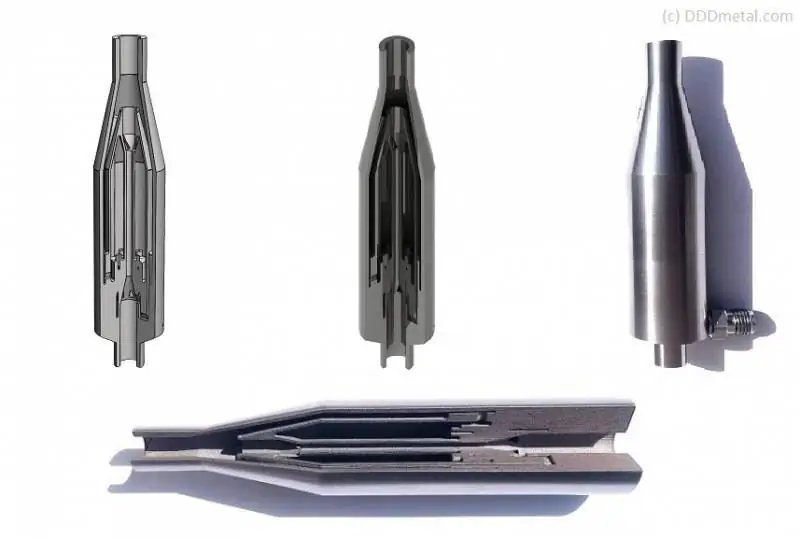
The use of 3D printing with tungsten carbide and steel / titanium will allow the formation of internal cavities along the entire length of the barrel, which in turn will provide its effective cooling, for example, by blowing air along the entire length, or even an analogue of heat pipes used in modern electronics.

3D printing can also be used to make the main parts of weapons, both plastic and metal. Receiver elements can be made with hidden cavities to cool the weapon and reduce its weight. Polymer elements can be made in the form of a honeycomb structure, again to reduce the weight of the weapon, and / or in order to additionally damp the recoil impulse.
An increase in the recoil momentum compared to small arms using low-impulse cartridges of 5, 45x39 mm or 5, 56x45 mm caliber will require a comprehensive implementation of recoil compensation systems to an acceptable level.
First of all, it can be a muffler - a muzzle brake compensator (DTC) of a closed type, similar to those that are supposed to be used in weapons developed under the NGSW program.
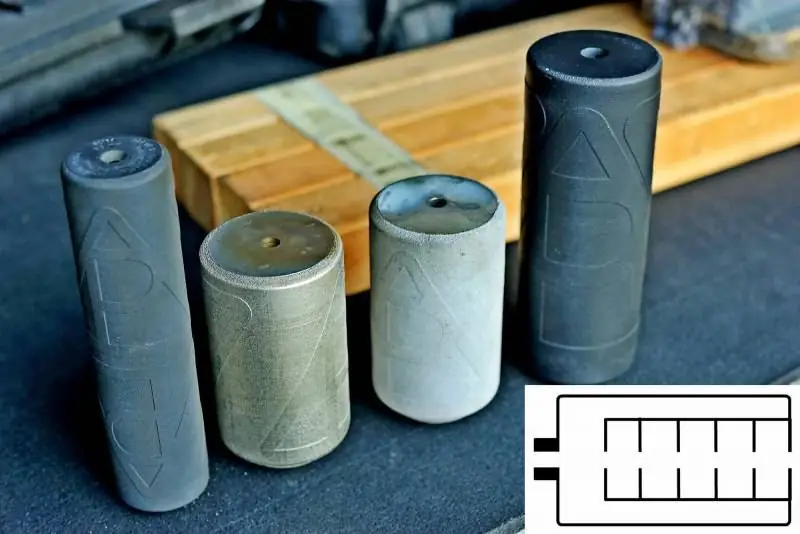
Automation schemes can also be implemented with the accumulation (displacement) of the recoil impulse, providing accurate firing in short bursts at a high rate, or other advanced damping / recoil absorption systems.
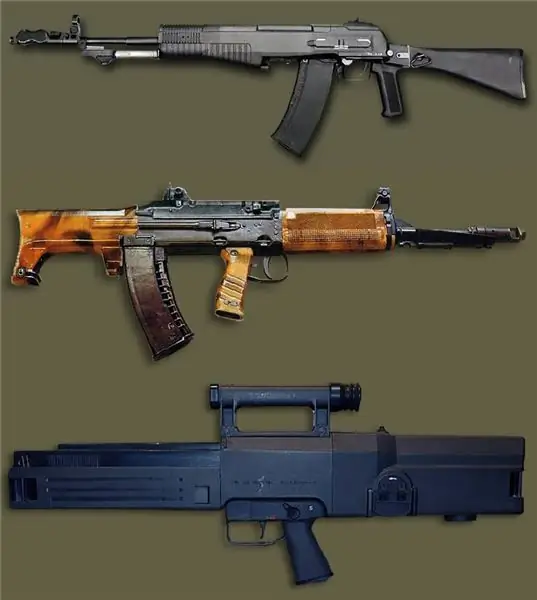
Interesting to consider is the scheme proposed by Aleksey Tarasenko with vibrational absorption of recoil.
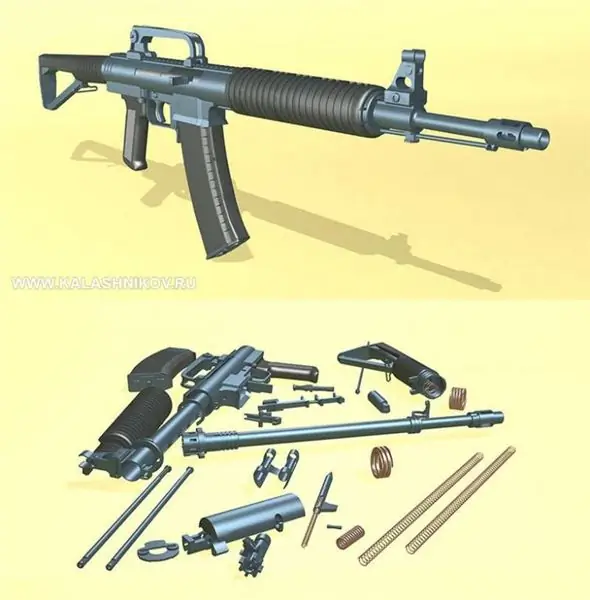
No less difficult problem than the development of the weapon itself and the cartridge for it is the organization of large-scale production of promising ammunition. The production of promising cartridges can be based both on the basis of classic advanced automatic rotor lines, and on the basis of new technological solutions, using 3D printers capable of printing with metal and polymers, high-speed delta robots, high-precision optical scanning systems that allow "on the fly" analyze the received ammunition and sort them by accuracy class.
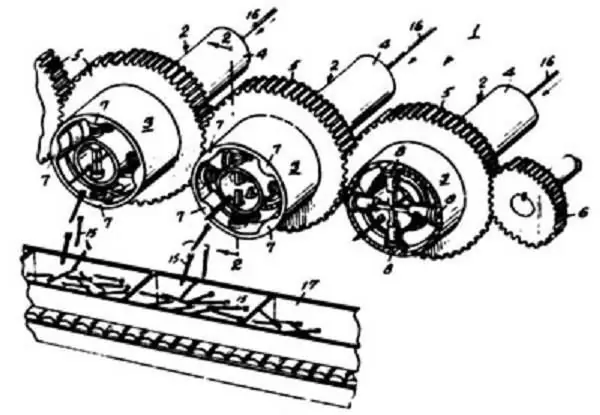

It can be assumed that the large-scale production of promising telescopic cartridges is not an unsolvable task, at least due to the fact that Russia has long debugged the production of 30 mm BOPS for automatic guns, which are also far from being produced in single copies. At the same time, the French-British consortium CTA International is already serially producing telescopic ammunition for the 40-mm automatic cannon 40 CTAS, including in the version with BOPS, and in the United States, Textron is preparing to produce telescopic cartridges for small arms under the NGSW program.
Also, do not worry about the shortage of tungsten for these purposes - its reserves are quite large in Russia, and more than large in neighboring China, with which we still have fairly even partner relations.
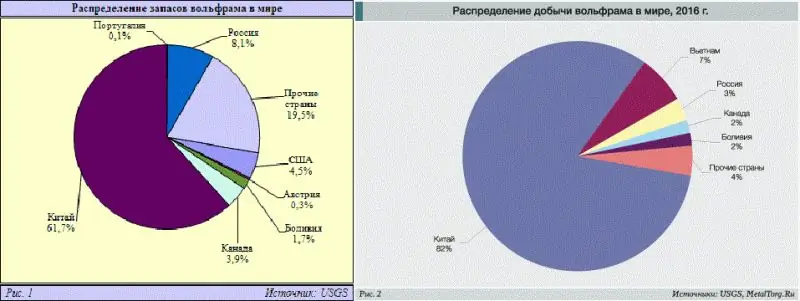
As for the high cost of promising weapons and ammunition, this is quite normal for new technology. Ultimately, everything rests on the cost-effectiveness criterion, which shows how promising the weapon-cartridge complex is superior to the existing samples. At the initial stage, special units are equipped with promising weapons, then the most belligerent units, in parallel, the design and technological processes for the manufacture of weapons and cartridges are being worked out in order to reduce their cost.
Without this, it is almost impossible to create a breakthrough weapon-cartridge complex. Let us recall how they reacted to the creation of the first submachine guns: they say, it is impossible to release so many cartridges to provide them with an army armed with submachine guns, and what this led to in the future.
History follows a spiral. Many designs and technologies that were previously discarded as unrealizable can be re-examined, taking into account the emergence of new materials and technological processes. It is possible that rethinking the possibility of using feathered sub-caliber bullets in promising small arms in combination with the conical barrel of the Gerlich system at a new technological level will make it possible to create small arms significantly superior to existing samples made according to the traditional schemes and technological processes.






